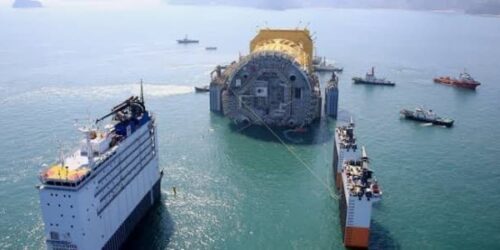Norway, the country with the highest electric vehicle (EVs) share of new car sales anywhere in the world, is not giving up on one of its core industries. The oil and gas sector is a major employer and the key contributor to the so-called oil fund, the world’s largest sovereign wealth fund with US$1.3 trillion in assets and holdings of 1.4 percent of all of the world’s listed companies.
The Norwegian government believes that the industry could reduce emissions and reach net-zero operations on the Norwegian continental shelf, at the same time ensuring new oil developments to support the local supply chain and employment. Norway is also betting big on offshore wind and carbon capture technology, including with strong financial support from the government, but it believes that oil and gas can continue to create value in the long term.
Norway is betting on offshore wind, hydrogen, and electrification to meet its commitment under the Paris Agreement, but its oil and gas sector will continue to play a major role in long-term job creation, economic growth prospects, and value for the country, the government said in a White Paper last month.
“The main goal of the government’s petroleum policy – to facilitate profitable production in the oil and gas industry in a long term perspective – is firmly in place,” Norway’s Minister of Petroleum and Energy, Tina Bru, said.
Norway has become yet another oil-producing country that has said it would not stop investing in oil and gas since the IEA suggested in a report in May that the world wouldn’t need new investment in fossil fuels ever if it wants to achieve net-zero in 2050.
The Norwegian Oil and Gas Association has also commented on the IEA report, saying that it “does not share the assumption that Opec members alone should account for more than half of oil and gas production for the world market in a 2050 perspective. If demand does not decline as rapidly as the IEA assumes in its scenario, and the supply side is simultaneously choked off, global energy provision could be threatened and lead to very high energy prices.”
Exploration activity and production offshore Norway were high in the first half of 2021, and many new oil and gas developments are being currently studied, the Norwegian Petroleum Directorate (NPD) said earlier this month.
Between January and June, eight discoveries were made in mature areas close to existing infrastructure, which could allow cost-effective development of the new discoveries, the directorate noted.
“Exploration has enormous significance for long-term value creation on the shelf. The addition of oil and gas resources from new discoveries, like we have seen so far this year, is necessary to prevent a sharp decline in petroleum industry activity after 2030. Without new discoveries, production could fall by more than 70 per cent in 2040 compared with 2020”, said Torgeir Stordal, director of Technology and coexistence at the NPD.
Going forward, Norway will see high activity and production, considering that there are as many as 50 projects where the licensees are aiming for investment decisions by the end of 2022, the NPD said.
Combined, these projects represent more resources than one and a half Johan Sverdrup fields. Total estimated investments for these planned projects are around US$43 billion (380 billion Norwegian crowns), the directorate has estimated.
“These projects would most likely have been implemented regardless, but the temporary amendment to the Petroleum Tax Act have probably led to some acceleration in certain projects. Progress in time-critical projects is another positive factor. There may be postponements, but we see a strong willingness to submit development plans by 2022”, Kalmar Ildstad, director of Licence management at the Norwegian Petroleum Directorate, says.
Regardless of the growing ‘keep it in the ground’ calls, Norway will keep oil and gas at the center of its economy and value creation of its energy resources. The government and the industry believe that emissions reductions and oil production are not mutually exclusive concepts.






